Fir: description, types, planting and care

The fir is a very beautiful plant that comes from the pine family. The Russian name comes from the German Fichte, which means "spruce". Fir is an ideal tree for shaded areas and alleys. These green beauties don't need a lot of lighting. If you want to plant a fir on your site or in the garden, you should get to know it better and find out all the features of its content.
What does it look like?
Before moving on to a detailed consideration of how to plant this gorgeous tree, you need to find out how it looks.
Fir is a large evergreen tree. Its average height usually ranges from 60 to 100 m. The trunk of a healthy specimen can be up to 2 m thick. A large, solid plant is characterized by the presence of a straight trunk. Fir has a well-developed rod-type root system. It goes to a considerable depth.
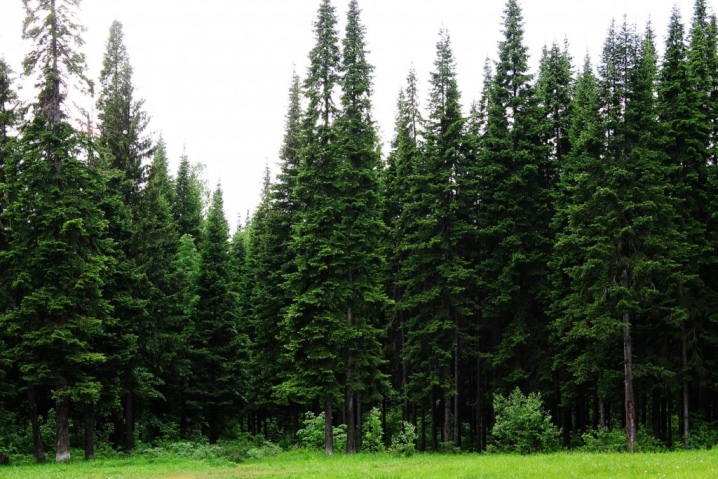
The young tree has a thin bark with a smooth surface. Over the years, it invariably becomes coarser, thicker, covered with noticeable cracks. The fir crown has a characteristic conical shape. It starts right from the base of the trunk. It is with this parameter that the fir sharply differs from other well-known conifers, for example, from pine.
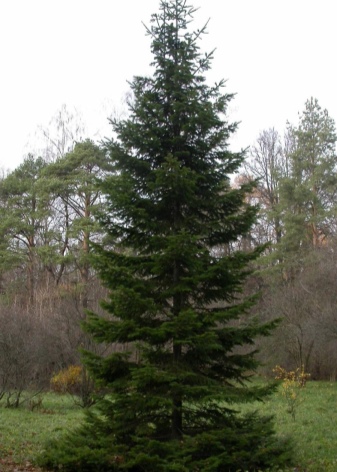
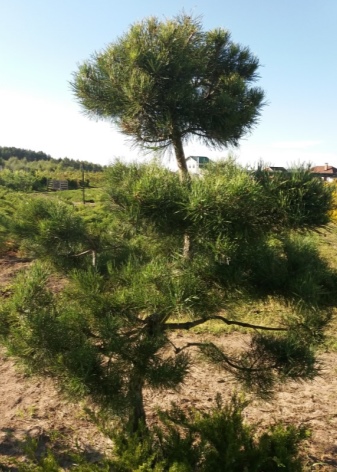
Fir branches are characterized by a ring-shaped horizontal arrangement. The leaves of the tree in question have a flat structure and are solid-edged needles, characterized by high softness. The needles taper towards the base, forming a short stalk. With the onset of winter cold, the needles of this coniferous tree do not acquire a dirty red color, as is the case with many other species. In the lower part, each fir needle is decorated with two snow-white stripes.
On the branches responsible for reproduction, the needles always have a pointed structure. As for vegetative shoots, they have a characteristic slightly notched or rounded tip. Male flowers look very similar to beautiful earrings collected from cones. Females have an ovoid, cylindrical or ovoid-cylindrical shape. The last elements "look" upward and consist of a rod on which the covering scales are located. In the inner part of the scales, there are fruit scales, which are carried by 2 ovules.
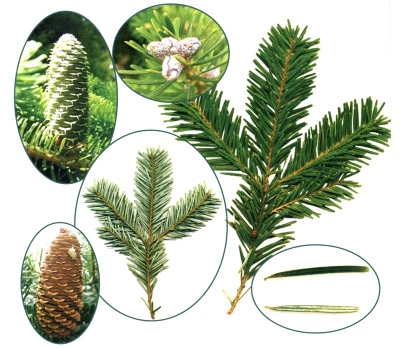
Fir is pollinated by the wind. As soon as the seeds of this tree ripen, the scales on the cones immediately stiffen, after which they completely disappear. In this way, winged seeds are released. Then only the rods remain on the tree.
It is important to consider that this beautiful tree is not hardy. Fir is a thermophilic plant, so exposure to harsh low temperatures may not affect it in the best way.
Growth rate and life span
Fir is a long-lived tree. Its average life span is about 200 years. There are also known such specimens that lived up to 500-700 years.
This tree is demanding on temperature, moisture level, and soil condition. If you provide the fir with all the necessary conditions, then it will live a long time, it will grow lush and beautiful.The growth rate of this tree is considered to be very fast. This fact is important to consider if you plan to plant the specified tree on a private territory.
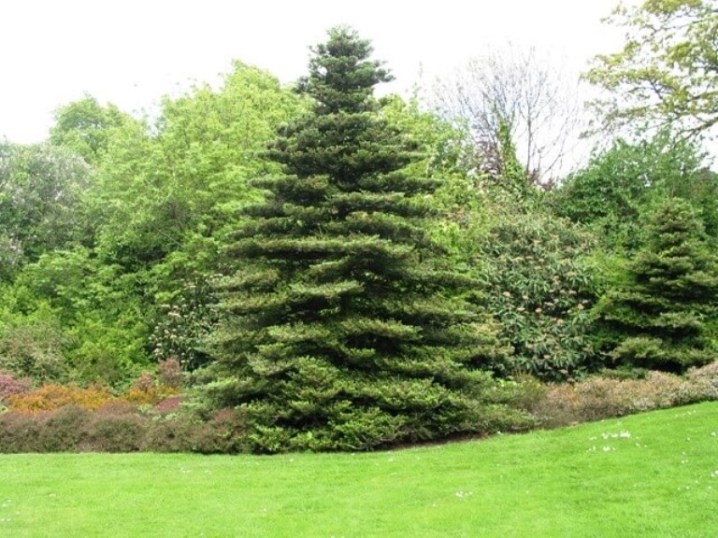
Differences from other conifers
Fir has a large number of distinctive features from other conifers. We will understand this issue in detail using the example of the comparative characteristics of the considered tree and spruce.
These trees have many common features and characteristics - the same lifespan, the same needles, the crown of a conical structure. Only fir cones are always directed vertically upward, unlike spruce, in which these elements hang... Fir cones crumble, and with them the scales fall off, leaving only the rods. In spruce, only seeds fall, but the cones do not leave the tree.
They ate thorny needles, but not fir. In these two trees, this component is also different in shape. Fir needles are flat, while spruce has several edges. The bark of the described coniferous beauties is also sharply different. Fir has a beautiful, neat bark that shines attractively and has a smooth surface. The spruce trunk is characteristically stratified, the bark on it looks inconspicuous.
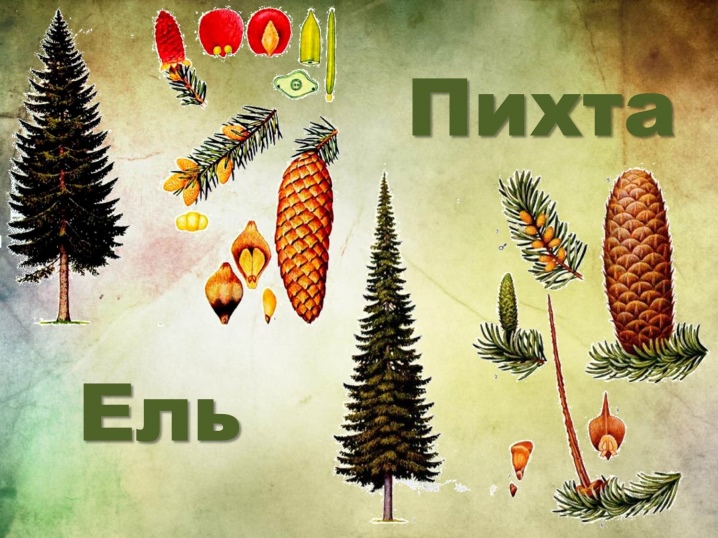
Varieties
There are many varieties of fir. Different species differ from each other both in appearance and requirements for maintenance and care.
Balsamic
The homeland of this species is considered to be the United States. Balsam fir is often found in Canada. This is a beautiful plant that loves to be in shady areas. The average height of an "adult" tree is 15 to 20 meters. If you provide balsamic fir with proper care, then its trunk in diameter can grow up to 0.7 m.
Young specimens have a characteristic grayish bark. The buds are resinous, characterized by a light green color. The buds can be up to 10 cm in length.
A tree of this species is planted both in a group and individually.
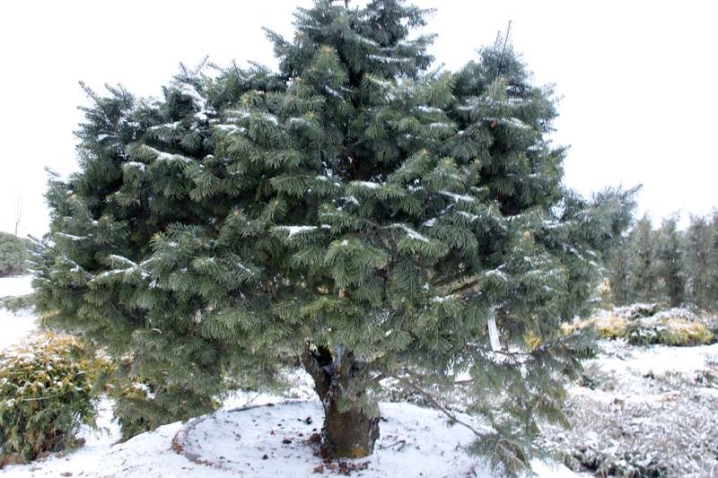
If you want to effectively decorate your summer cottage, you can turn to the attractive decorative forms of balsamic fir. Such varieties are popular:
- columnar "Columnaris";
- "Nana";
- "Argenta";
- specimens with a spherical crown.
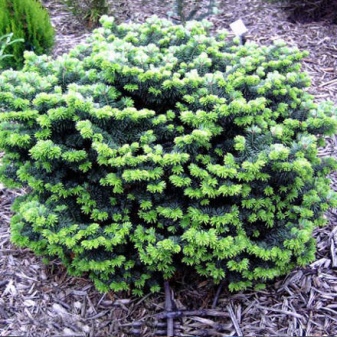

Korean
An equally attractive type of fir, but it is distinguished by its slow growth rates. Adult "individuals" in height usually reach 15 m, and the diameter of their trunk is about 0.8 m. The needles of these trees are characterized by high rigidity. At the same time, she is very fluffy and looks "fluffy". Cones are distinguished by an elongated structure, have the shape of a cylinder. In length, they reach 7 cm.
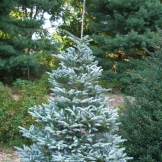
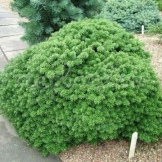
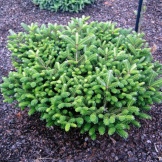
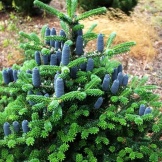
Caucasian
Otherwise, this tree is called Nordmann fir. In the wild, this plant is found exclusively in the Caucasus mountains (hence the name). The height of this tree can be 60 m. The crown has a narrow conical shape, it grows lush. The length parameter of each of the needles varies within 4 cm. The cones have an elongated structure, a pleasant greenish tint. Ripe fruits change their color and turn dark brown.
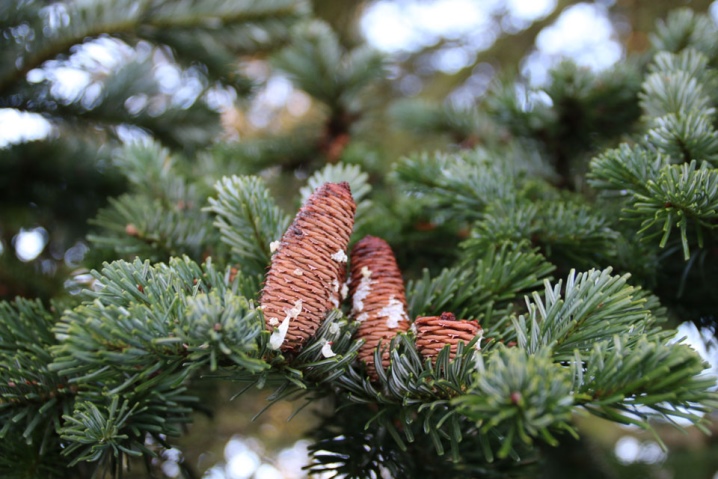
Belokorya
The second name of this fir is budscale. The specified tree grows in the Far East. The average life span is about 180 years. This tree grows very quickly, is not afraid of winter temperatures and shade, but is demanding on soil moisture and ambient air.
The fir of the described variety was introduced into the culture of Moscow and St. Petersburg relatively recently. Its low forms have not yet been bred. Experts advise people who have large and spacious areas to look closely at the white fir. Thanks to the aesthetic bark of a light tone, which contrasts with the shade of the needles, branches that descend to the ground, decorated with purple cones, this green beauty is able to make an indelible impression. The average growth of white fir is 30 m.
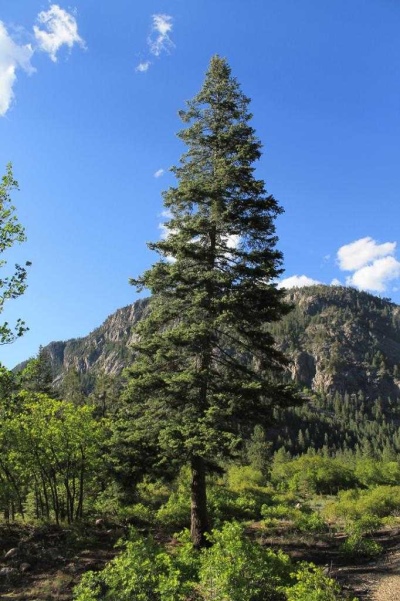
Monochromatic
This fir comes from North America. A tree of this species lives up to 350 years.It loves light, can withstand almost any climatic conditions without problems, is not afraid of winds and drought. Due to its unpretentiousness, many professional gardeners love the one-color fir. In most cases, this tree is planted in the middle lane. The monochromatic fir grows at a fast pace, it goes through the transplanting process without any problems.
Monochrome fir feels great in loam, but it can grow in any soil (even salty). With the onset of severe winter cold weather, a tree of this species may suffer. In plants that are frozen, the needles inevitably acquire a brown tint, partially fall off.
Monochrome fir can grow up to 40 m. It features a multi-tiered crown, the appearance of which resembles a set of jagged frills that descend to the surface of the earth. The shoots of the tree are covered with thick bark, which has a light gray tint. One-color fir is especially beautiful and solid due to its natural needles. It has a grayish or bluish-green color, is thick and long (about 6 cm).
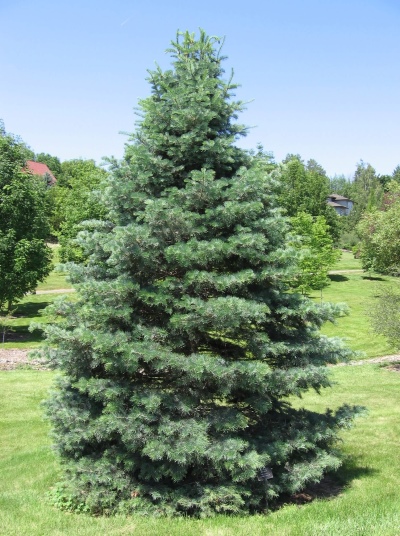
Of all the decorative forms of the one-color fir, the chic "Violation"... Its height is only 6-8 m. This tree is covered with bluish white needles. Another decorative look has a similar height - "Aurea"... Initially, the color of the needles of this tree is golden, but over time it turns into a silvery gray.
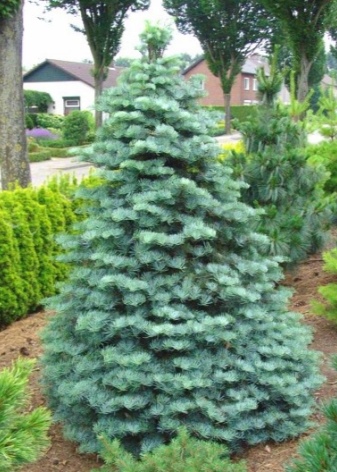
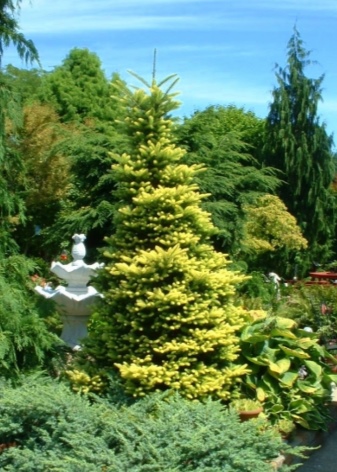
Siberian
Under natural conditions, this fir grows in the northeast of the European part of Russia, as well as in Siberia. The average lifespan of a Siberian tree is 150-200 years. This breed is resistant to frost, but demanding on air humidity. The ideal conditions for this tree are drained loams. Siberian fir grows quickly both in the shade and in the sun.
Siberian fir is known for the fact that its needles emit an impressive amount of phytoncides. These elements have the ability to disinfect the air. For this reason, experts recommend planting Siberian fir closer to the windows of the house.
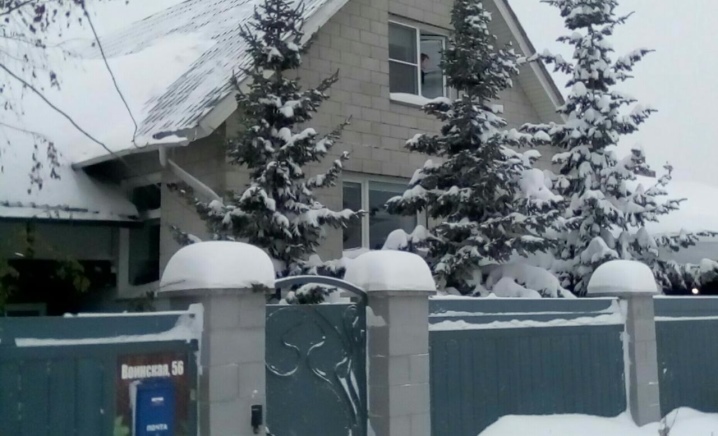
This tree is famous for its very beautiful appearance. Its branches are thin, gracefully descending to the ground. The bark of Siberian fir has a characteristic dark gray color. The highest height of this gorgeous tree rarely exceeds 30 m. The needles of the Siberian fir are 2-3 cm long. It is distinguished by a dark green color and a beautiful shine. The cones of this tree can range in color from light purple to light brown.
Among the decorative Siberian firs, the height of which can exceed 8 m, there are amazing specimens with blue needles ("Glauka"), variegated needles ("Variegata")... The rich silvery species called "Elegance", which are very small in size, look spectacular.


Fraser
The Fraser fir comes from North America. In the conditions of the Russian winter, this tree feels good. However, the Fraser fir is considered to be very demanding on the soil in which it grows. It can be extremely drained. This plant is not afraid of the shadow, it grows at a fast pace.

The height of the Fraser fir is usually 25 m. The crown is characterized by a pyramidal structure. The needles of this tree are 2-3 cm long, in the lower part they have an interesting silvery shade. Fraser's fir cones are renowned for their beauty. They have prominent scales and ripen in October.
On small areas, the decorative form of this fir - "Prostrata" will look great. It grows in the form of a shrub that spreads, branches spread wide.
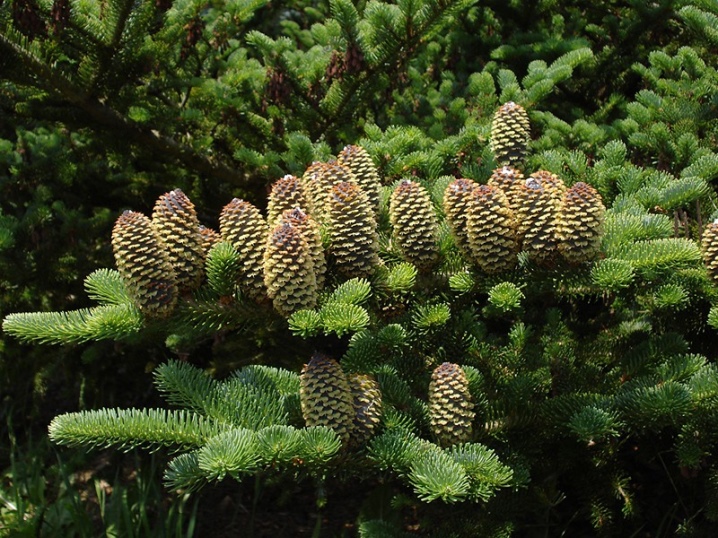
Whole-leaved
Fir of this species grows in the south of Primorye. It is a slender, beautiful tree that is most often found on mountain slopes. The growth of solid-leaved fir is relatively fast. She is not afraid of shaded areas; strong illumination does not scare this plant either.
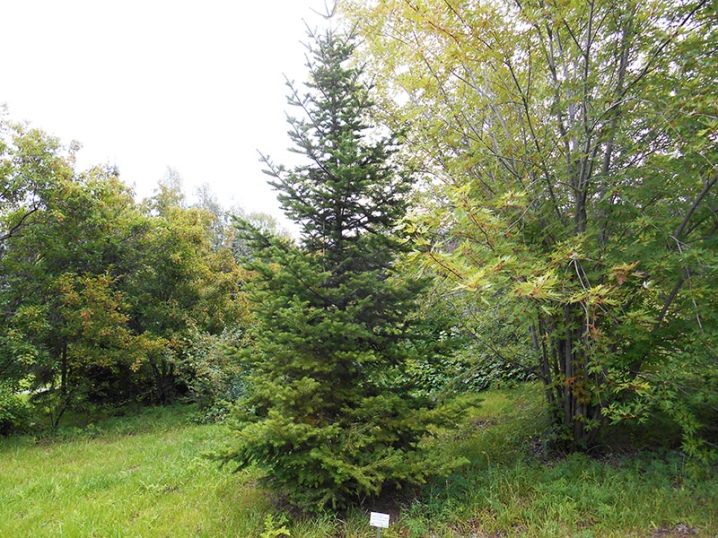
Long-livers of solid-leaved fir can live 400-450 years.In their natural environment, trees can grow in open woodlands. They begin to bear fruit in the period from 20-25 years.
The whole-leaved fir has a remarkably developed root system. It is deep, has large, obliquely directed roots (like an anchor). The bark of this tree has a dark gray hue, and sometimes it is completely black (thanks to this factor, another name appeared - black fir). From a young age, the bark of the whole-leaved breed flakes off. On older specimens, it cracks horizontally. Young shoots are always well pubescent. The needles are long, tough and prickly. On all branches, it is solid - it does not have double ends (hence the name - solid-leaved).
The needles sit on the shoots like a comb. The buds are erect and almost cylindrical in shape. Their length ranges from 7 to 9 cm. They are located at the very top of the crown.
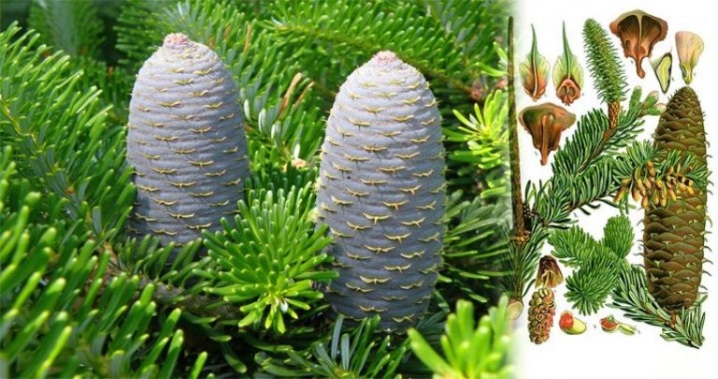
Features of growing at home
Fir can be grown not only in the open field, but also at home in a pot. For this, it is necessary to give preference to dwarf varieties, which do not need a lot of free space. Dwarf trees are available today. When choosing such "green pets", it is important to take into account the degree of their resistance to frost. If a pot with such a plant is planned to be placed in a loggia or balcony, then it is worth choosing more frost-resistant "pets".
It should be remembered that in the container the fir will freeze much faster than in the open field.
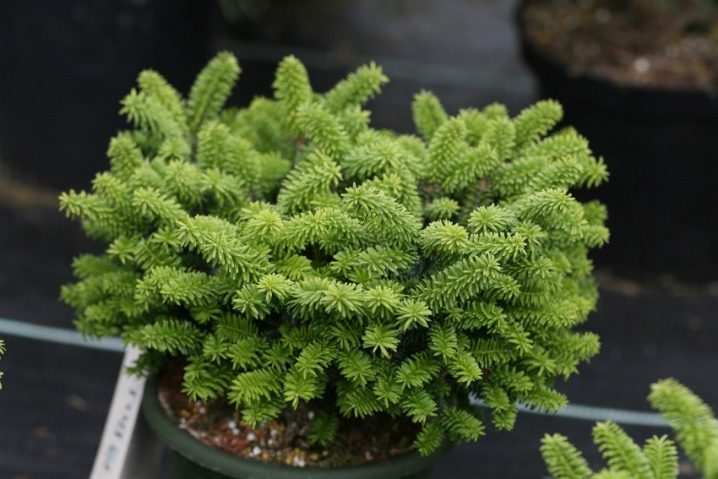
Fir, planted in a special container, will look very impressive and original in the house, but its cultivation will require compliance with certain rules.
- To care for the fir was as convenient and simple as possible, it is recommended to use a stand for containers on wheels. Thanks to this solution, a mature tree can be easily moved around the house.
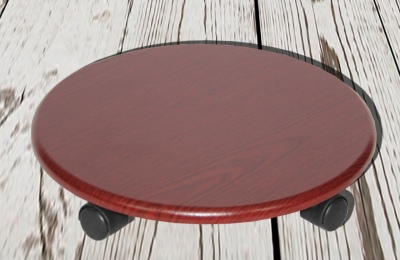
- If the seedling was bought in winter, then before planting it in a permanent pot, you will need to wait a certain time for the plant to adapt and get used to the new conditions. It is advisable to make sure that at first the situation does not differ from that in the store.
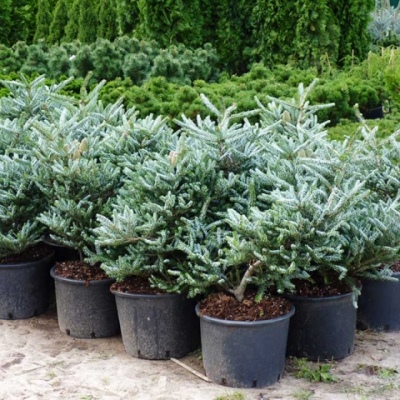
- When the tree adapts to the new environment, move it to where it will stay. It is important to take care of good drainage and sump, because the fir loves moisture very much, but its stagnation can be detrimental to it.

- Any air is suitable for the normal growth of this plant. You will not need to take any measures aimed at increasing the humidity level of the planting habitat.

- At home, fir should be grown in a pot that is at least 5-10 liters in size. There must be a suitable soil. The earthen lump around the roots cannot be destroyed.
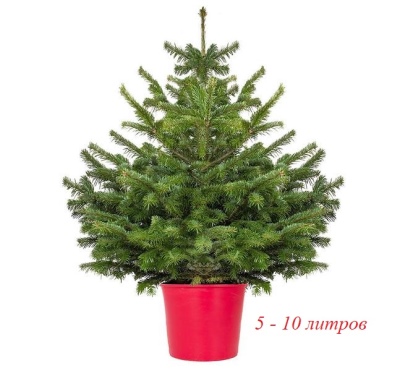
- It is important to choose the right soil for the fir tree correctly. The soil must be nutritious and neutral. Slightly alkaline compositions are allowed.
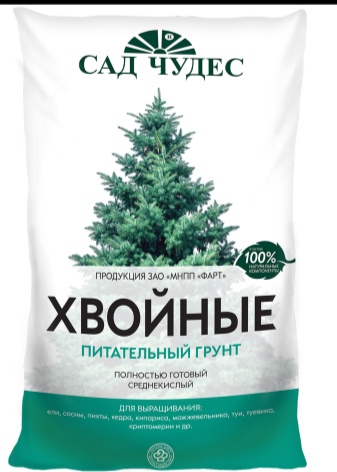

- The potted plant will need the right feeding. When planting a tree, special complex fertilizers will be required. It will be necessary to carefully monitor that the root collar is located at soil level.
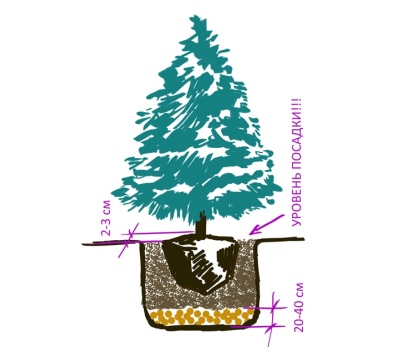
- Frequent watering of fir in a pot is not required. Instead, it is best to spray the plant every 3 days. Watering should be done at the root of the fir.
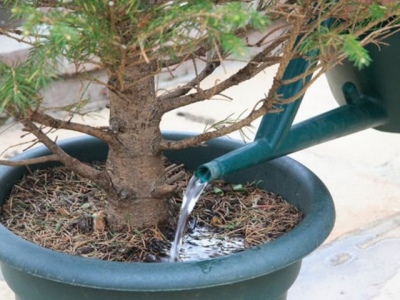
- You can resort to feeding the tree no earlier than 14 days after the transplant procedure. For this, special granular fertilizers designed specifically for conifers are suitable (the composition of "Kemir universal" is considered the best).

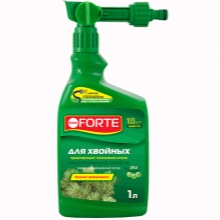
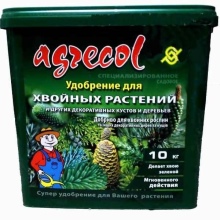
- Complicated care in the process of growing fir is not required, but the ornamental varieties of this plant are susceptible to a number of diseases, which must be dealt with in a timely manner. If a tree has become a victim of a pine cone, root aphid or shoot moth, then it is necessary to turn to pesticide treatment.If a fungus has appeared in the soil from waterlogging, then the plant will need to be treated with a solution of weak vitriol, and then moved to another soil.
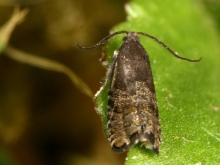
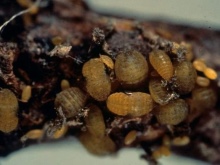
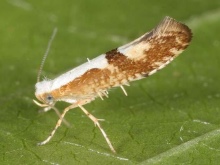
Climate zone accounting
Having decided to plant a beautiful fir on your site, it is important to consider in which climatic zones it will feel comfortable. So, Korean conifers get along well in the middle lane. Fir can be grown without problems in the Moscow region. In such conditions, the Siberian variety feels especially well. Fir can be propagated here.
Under natural conditions, different types of fir are widespread in mountainous areas, forests, and on elevations. When choosing a certain type of fir for your personal plot, it is important to take into account the level of its frost resistance.
Depending on which climatic zone you live in, you should choose a more frost-resistant or thermophilic tree.


Compatibility with other plants
Do not rush to plant fir in your garden plot. First you need to figure out next to which plants this tree should not be planted. To prevent the occurrence of dangerous fungal foci and infections, both in nurseries and in urban / suburban plantings, it is important to take into account the incompatibility of certain breedswhich are sources of infections for each other. So, it is not recommended to plant fir if there is larch, willow or birch nearby.
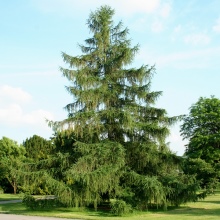
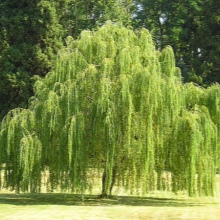
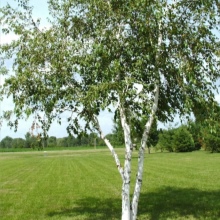
In order to prevent active reproduction of aphids, it is advisable to resort to spatial isolation of fir and spruce.
In addition, fir is incompatible with such plants as:
- pear;
- Rowan;
- yew;
- cherries;
- Apple tree.

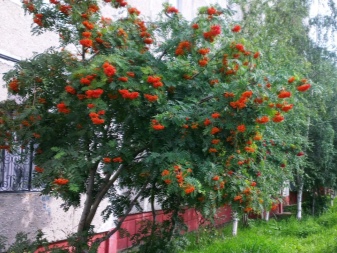
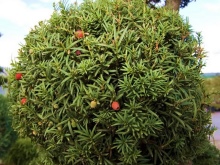

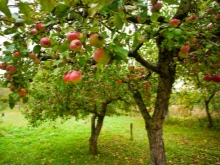
Choosing a neighborhood for a fir, it must be remembered that this gorgeous coniferous tree is capable of overwhelming the growth of the surrounding plantings... Horse chestnut, rose, lilac, viburnum, barberry, poplar and many other crops are distinguished by the same features.
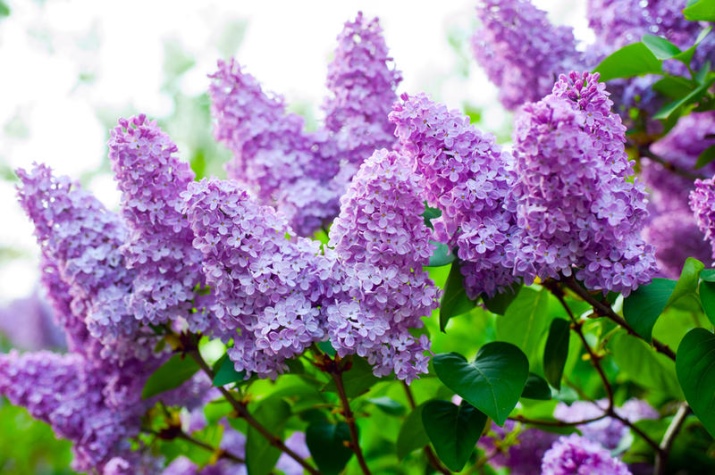
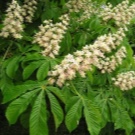
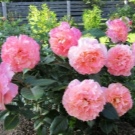

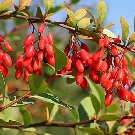

If in the choice of neighbors for fir there are any doubts or do not want to make mistakes, it is better to consult with experienced gardeners and gardeners. Professionals will tell you what can be planted next to this coniferous tree, and which solutions are better to refuse.
Choosing a place on the site
As is the case with any other plant, it is important for the fir to find the perfect place on the garden plot. The health of the tree, its type and growth rate will depend on the quality of the selected zone, therefore, this stage should be treated with full responsibility.
Fir trees are relatively unpretentious "pets". They feel good being in shaded places on the site, especially when it comes to the first years of the tree's life. During this period, partial shade is almost a prerequisite for growing a healthy specimen. Grown up conifers thrive better if they are placed in an environment where there is sufficient light. For "teenagers" it is better to allocate areas with full sunlight. The lion's share of fir varieties have a root system that lies at an impressive depth, so they can be safely called wind-resistant.
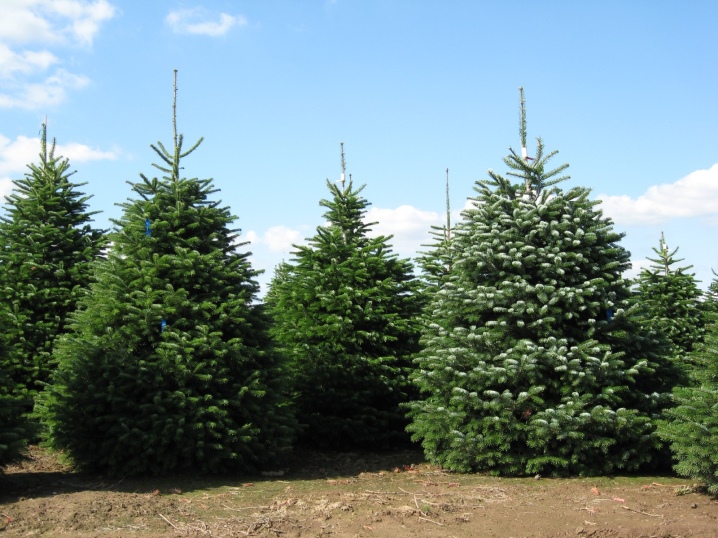
Fir trees do not “like” too dry air. It is not recommended to plant these trees in places subject to various pollution. The latter include smoke, gaseous impurities.
In open ground conditions, fir should be in the most environmentally friendly environment.
For the tree, it is advisable to choose a shaded place where there is sufficient fertile soil. It should be moist, but in moderation. The soil must also be well drained. Loam is ideal. It will be just great if a reservoir is located at a distance from the place of planting of the fir.
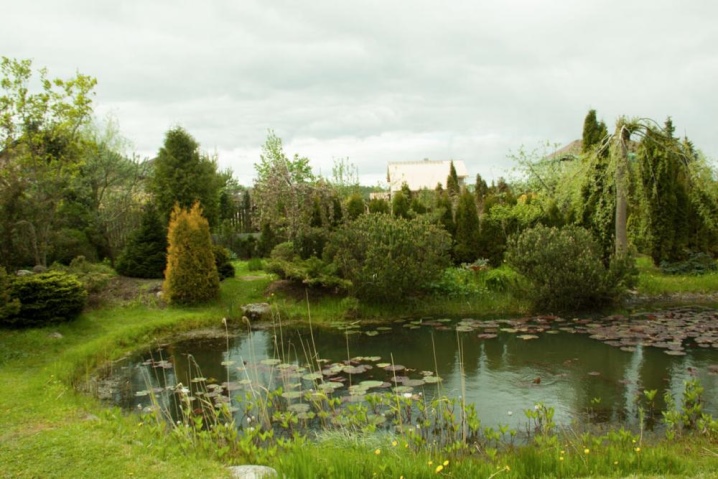
How to plant?
Having figured out all the features of different types of fir, having found the ideal place for it in the local area, you can proceed to planting. For this, it is important to adhere to a number of basic rules and nuances.
To transplant a plant into the ground, you need to select seedlings whose age is no more than 4 years. They should be planted in April. The ideal time is late August - early September.
Experts recommend planting fir on a cloudy or rainy day.
A couple of weeks before the immediate planting of the fir, you will need to dig a hole. Its approximate size should be 60x60x60. The dimensions of the prepared fossa largely depend on the volume of the root system of the green "pet". You will need to pour a couple of buckets of water into the prepared hole. As soon as it is completely absorbed into the soil, you need to carefully dig up the bottom (half a shovel is enough), and then send a layer of crushed stone or crushed brick there. The thickness of this layer should be approximately 5-6 cm.
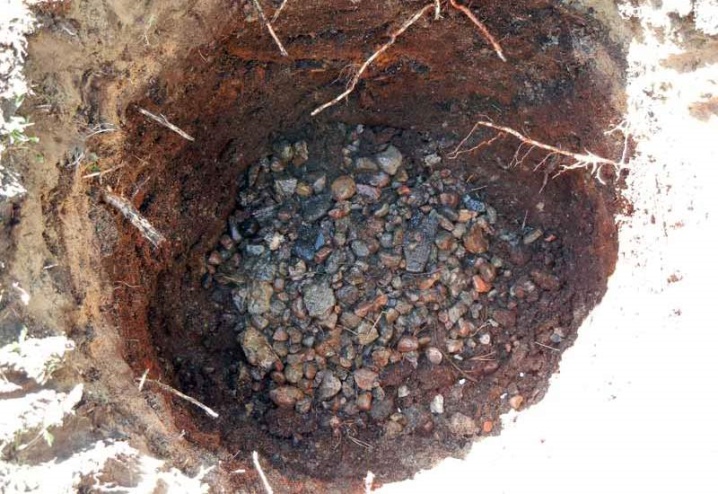
Next, you need to fill the hole halfway with soil, the composition of which should be as follows:
- humus - 3 parts;
- clay - 2 parts;
- sand and peat - 1 part each;
- sawdust - 10 kg.;
- nitrophoska - 200-300 g.
After 2 weeks, when the soil in the hole settles a little, it will be necessary to lower the rhizomes of the seedling there with maximum accuracy. This must be done so that the root collar is level with the surface of the site. The easiest and most convenient way is to fix the seedling on a small hill formed from a soil mixture.
The roots of the seedling will need to be carefully but carefully straightened. Try to act carefully so as not to harm the plant. If the roots are damaged, the fir may die, not taking root in a new place. The pit will need to be filled with soil to the very top. It will have to be properly compacted. After planting, the coniferous tree will need to be watered. If you wanted to grow a gorgeous fir alley, then the seedlings will need to be placed at a distance of 4-5 cm from each other. Placing plants in a group provides for a gap between seedlings, which is at least 3-3.5 m for a loose group and 2.5 m for dense ones.

As you can see, there is nothing difficult in planting fir in open ground. The main thing is to act as carefully and carefully as possible.
One should not rush and rush. If you damage the plant in the early stages, it will hardly be possible to root it.
How to take care of it properly?
It is not enough just to plant a fir of any kind on the site. In the future, she will need to provide proper and timely care. The gardener will need to resort to a number of basic procedures that cannot be dispensed with. Let's consider them in more detail.
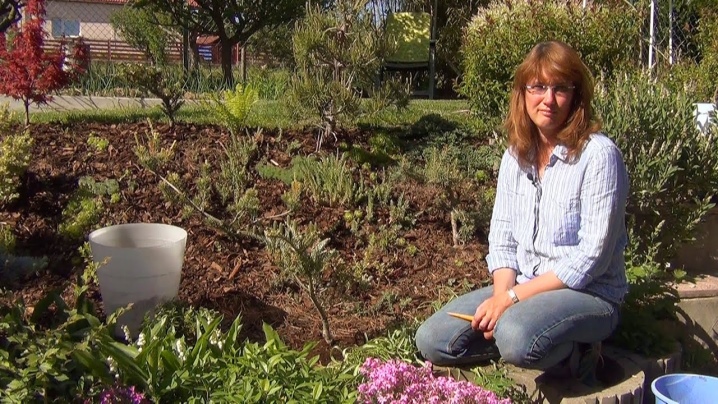
Top dressing
In the summer or spring seasons, it is advisable to make top dressing. Experts say that it is better to approach such procedures when the fir reaches 2-3 years of age. This should be done 3 times. For these activities, a mullein is quite suitable (it must be diluted with water in a ratio of 5 to 1). Instead of mullein, a special hydroponic solution is often used. You can buy ready-made fertilizer produced specifically for conifers in a specialized garden store (it is not recommended to take other options). It is better to fertilize the plant together with watering.
An excellent top dressing, which experienced gardeners bring in in the spring, is "Kemir-universal". It is added to the soil around the trunk in a volume of 100 to 125 g.
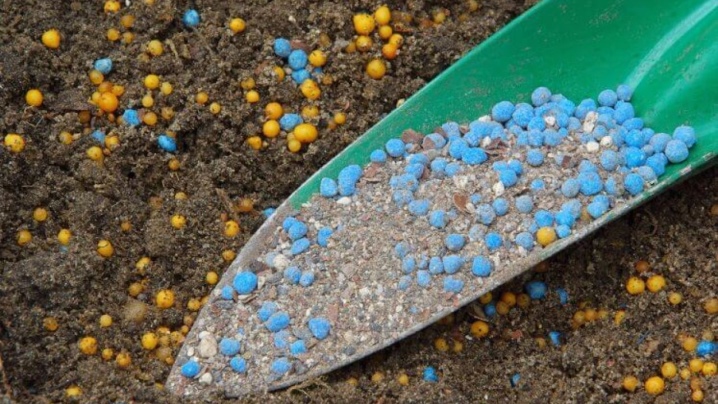
Watering
It is recommended to water only moisture-loving varieties of fir. In order for the plant to develop correctly and be healthy, it will not need too frequent watering. If the weather is damp, you should never water the tree often and a lot.
It is recommended to water young seedlings of moisture-loving fir 2-3 times per season - this will be enough, there is no need to fill the plant. Experts recommend turning to a special method of irrigation - sprinkling. This definition means soil irrigation through a special system of nozzles, under which the liquid will be evenly sprayed over the existing area. You can do it easier - pour in 1.5-2 buckets of warm water for each planting.
If the days are too hot in the yard, then watering is allowed a little more often.
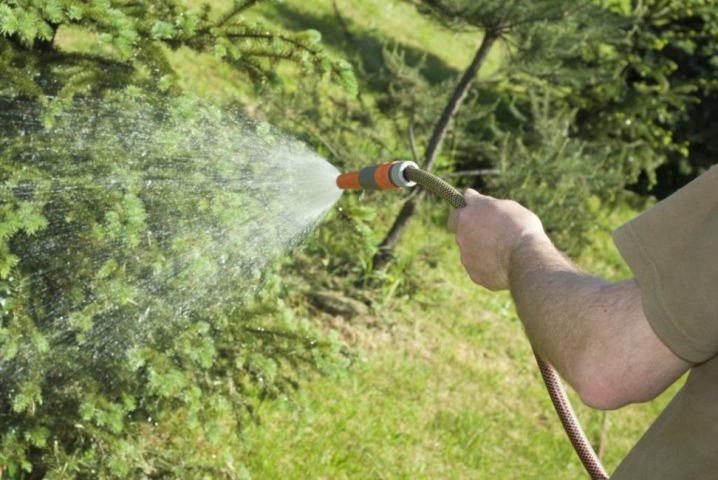
It is recommended to ventilate the greenhouse with plantings periodically.
Pruning
An important step in caring for the plant in question is its timely pruning. It should be done in the spring before the juice starts moving. During this necessary procedure, you will need to remove any dried or injured branches. At the same time, you can form the crown of a coniferous tree that grows on the site.
For pruning, only use special garden shears. It is important to remember that during one haircut, the stem can be shortened by no more than 1/3. In most cases, the crown of such a tree is very neat, so it simply does not need extra shaping.
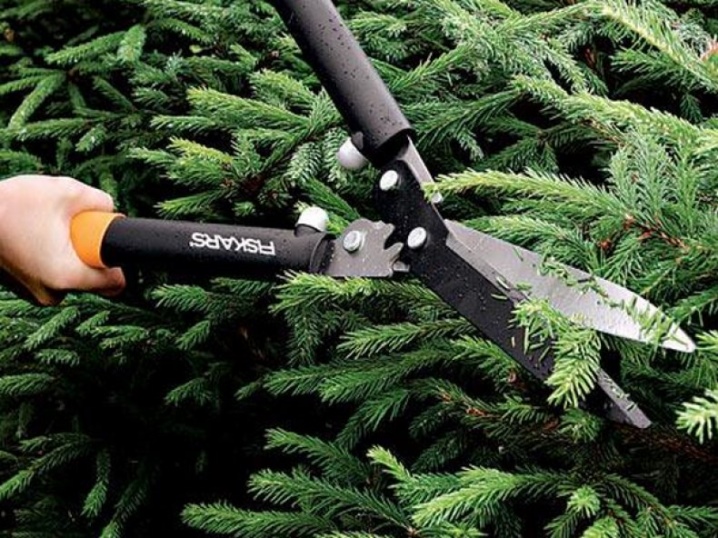
Transfer
It is important to transplant the fir correctly as soon as the right moment comes. If we compare this tree with other conifers, then it is worth noting that it is much simpler and more likely to adapt to a new environment. Young plants are often transplanted. This should be done very carefully and carefully. This procedure takes place in several stages.
- First, you need to carefully dig out the seedling. At the same time, try not to harm the rhizomes, otherwise the plant will not take root, it may die. To dig out a seedling, you can make a circle around the trunk. Its diameter should be 30-40 cm.
- Pry the outlined circle with a shovel, and then remove it from the old place along with the earth and roots. Put him in the wheelbarrow and go to the new prepared pit.
- The dug out seedling will need to be moved to a new location. It is advisable to enlist an assistant in this case.
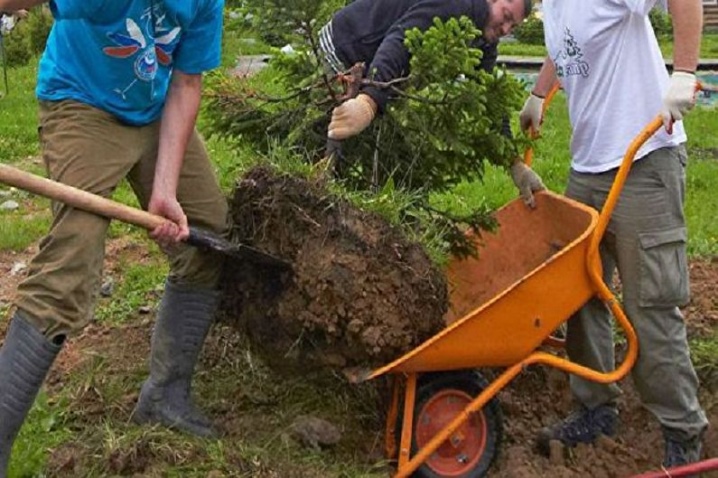
If we are talking about transplanting a tree of an older age, then it is advisable to thoroughly prepare it for the planned "relocation" to a new place. The ground around the tree should be pierced with a shovel about a year before the direct transplant. Here the diameter of the completed circle should be much larger. During the year, the fir will have time to grow new young roots in the inner part of the outlined circle. Thanks to these components, the plant will survive the transplant much easier and faster.
It will be very difficult to remove the "adult" fir from the soil, to move it to a new place alone. You can't do without an assistant here. When carrying out all of the listed procedures, it is important to ensure that the earthen lump does not crumble.
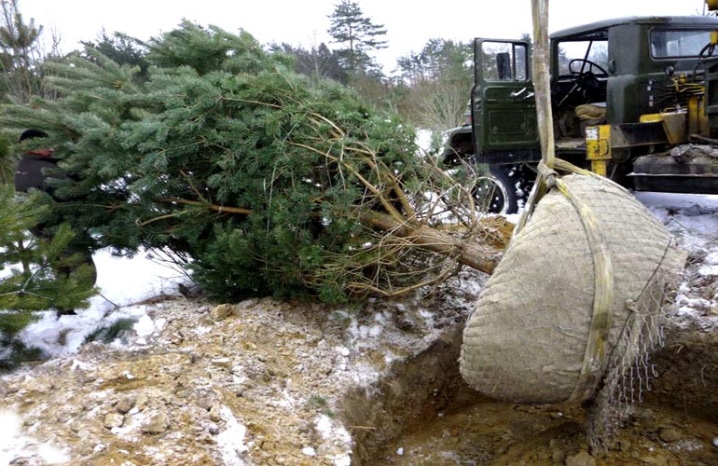
Reproduction methods
Fir can be propagated in 2 main ways: cuttings or seeds. For species specimens, the seed method is more suitable. Ornamental firs are usually cuttings.
Cuttings
First, let's look at how fir cuttings are made. For reproduction, it is necessary to take cuttings, the length of which is from 5 to 8 cm. They should be taken exclusively from young plants. Shoots should be annual with only one apical bud and heel (prerequisite).
If you need to get a cutting with the necessary heel, then it is recommended not to cut it off, but to tear it off with a piece of bark and wood from a more mature shoot with a sharp movement. It will be necessary to prepare cuttings in the spring before the start of sap flow, on a cloudy morning from the middle half of the crown, from the north side of the tree. All burrs must be removed from the heel with the utmost care before proceeding with the landing. Care must be taken that the bark does not exfoliate from the wood.
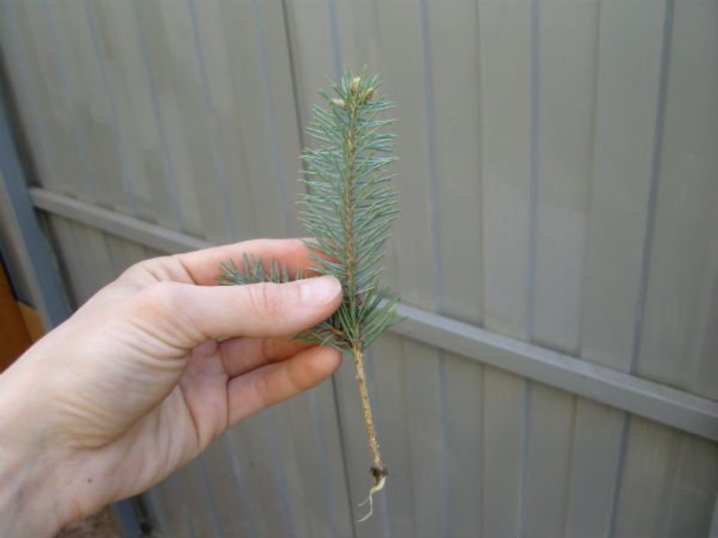
In order not to face fungal diseases in the future, the cuttings will need to be kept in a 2% solution of "Fundazol", "Kaptan" for 6 hours. An alternative is also suitable - a dark pink solution of potassium permanganate. After that, the cuttings will need to be carefully planted in a mixture consisting of sand, humus and leafy earth (the parts should be equal). At the end of this stage, the sprouts are covered with a transparent cap.
In order for the cuttings to sprout as soon as possible, it is recommended to organize the lower heating of the substrate 2-3 degrees (Celsius) above room temperature. It is recommended to keep the cuttings in a bright place, but the sun's rays should not fall on it. You will need daily ventilation. In winter, it is better to put the container with cuttings in the basement, and in the spring it will be possible to take it out into the fresh air. Please note that the rooting of cuttings will take place for a long time. First of all, the callus will grow in the fir, and the roots will appear only in the second year.
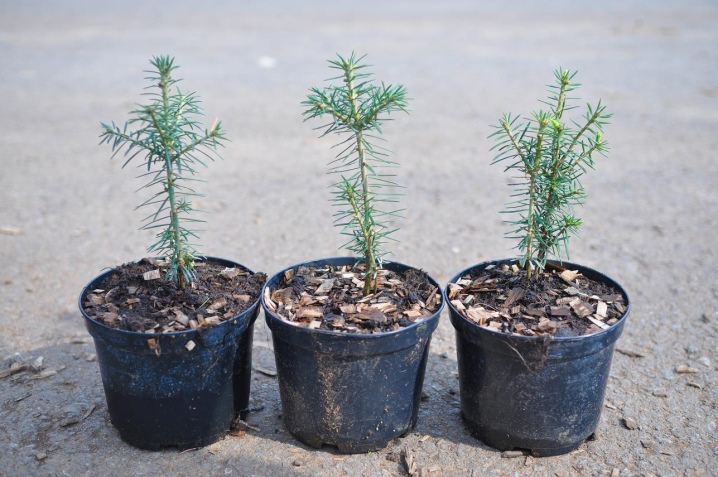
Seeds
Seed propagation of fir is not the easiest way. It can be difficult to collect the seeds, because the cones in adult specimens ripen at an impressive height, and as soon as they ripen to the end, the winged seeds from them immediately crumble and fly away. If you managed to get a cone that has not matured a little, you will need to dry it, and then remove the seeds from it and store them up to sowing procedures in a refrigerator or basement. The humidity should be high. Before direct planting, fir seeds need correct stratification.
In April, the seeds will need to be sown in a garden bed, keeping the soil depth of 2 cm. The latter should consist of turf and sand. Without watering, the planting should be covered with a film so that a crust does not form on the soil surface. This procedure also significantly speeds up the process of emergence of the first shoots. After 3-4 weeks, the sprouts will sprout, and you need to start watering and loosening them. You will need to weed the beds.
In the first winter season, young seedlings must be covered with spruce branches. The next year, you can start planting seedlings in their permanent place. Fir from seeds will grow very slowly at first. Within 4 years, it will reach a height of only 30-40 cm, since at this time, for the most part, the formation of the root system will take place. After that, the growth of the tree will noticeably accelerate.

Diseases and pests
When growing fir on your site, it is important to remember that it can be attacked by pests or get sick. If you correctly choose a suitable place for planting this plant, provide it with competent care, then it will have strong immunity. However, despite its resistance to many ailments, fir can fall prey to aphids. The first and main sign indicating such a problem will be a noticeable yellowing of the needles of the tree. There is nothing difficult in removing aphids. To do this, you need to use a special drug "Antio" or "Rogor". They will need to sprinkle a tree in March, when insects wake up and become dangerous for planting.
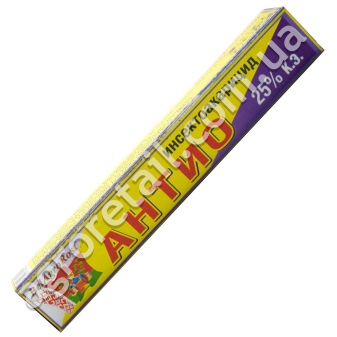
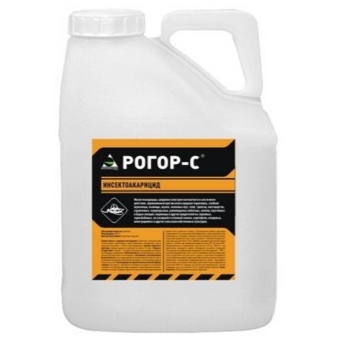
To process wood, stir 20 g of the selected preparation in a bucket of clean water. These funds will help solve the problem not only with aphids, but also with a fir moth or leaf roll.
If you notice that the fir “blooms” with yellow spots with outgrowths, then this will indicate that the tree has been affected by fungi. Branches that have changed their color will need to be removed. Experts advise getting rid of fallen needles. The whole plant will need to be treated with a special Bordeaux mixture solution.

There is another widespread pest that can seriously harm the fir - this is the false shield. Evidence of her attacks will be the shiny marks on the needles of the tree, as well as her shedding in the future. Certain areas will change their color altogether - they will become not juicy green, but brown. As in the situation with aphids, you will need to use special preparations for processing the needles.

Experienced gardeners are advised to wear special protective belts made of burlap and impregnated with caterpillar glue - the latter will get the larvae of a dangerous parasite.
Spider mites can also become dangerous for fir.This is one of the most damaging pests that can cause serious damage to the tree. As soon as a spider mite appears, the fir changes color and then falls off. The cobweb begins to cover the top of the tree's branches - this is the most noticeable feature and immediately catches the eye. You can begin to moisturize the green "pet" in a timely manner, because in most cases the tick appears in conditions of insufficient processing and a dry climate. Dandelion tincture is another effective remedy against ticks - this is a wonderful preparation that does not contain chemicals.
Preparing a dandelion composition is easy and simple. To do this, you need to grind 300 g of leaves and pour 10 liters of warm clean water over them. Next, the tincture will need to be held for about 3 hours. After that, the resulting liquid can be used to treat the affected fir needles.
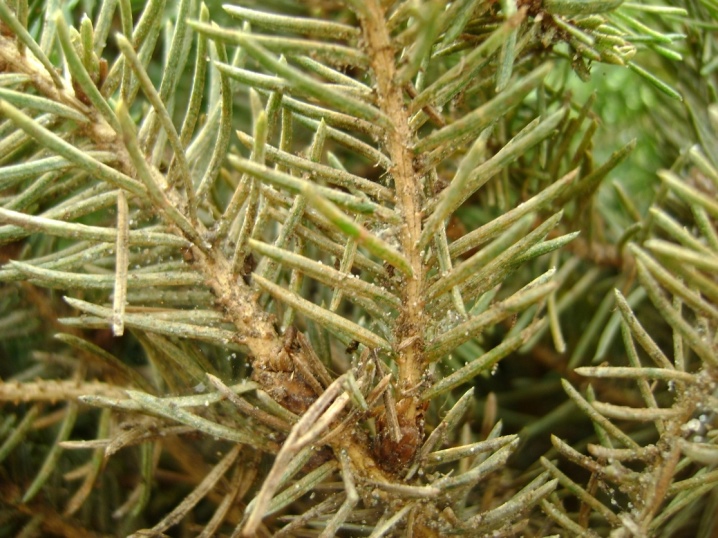
Fir's frequent guests are caterpillars. You can understand that a tree suffers from them by noticing mucus on the branches. This is not the most pleasant phenomenon, but it can be easily dealt with. For this, vegetable tinctures are suitable. An onion or tomato infusion will do.
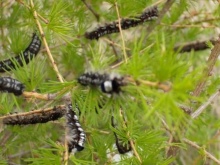
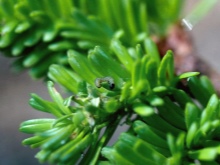
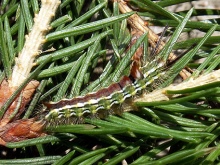
The easiest onion composition to make. To make it, you need to take a liter of water and 10 g of very finely chopped onions. The tincture will need to be kept for 7 hours. After that, you can safely start processing the plant.
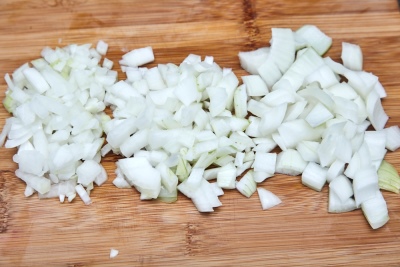
Tomato tincture is a little more difficult to prepare. To do this, you need to prepare 4 kg of vegetable roots and leaves. They will need to be poured with water, and then brought to a boil, and then held for 30 minutes over low heat. The resulting brew will need to be filtered, and then diluted with fresh water in a proportion of 3 parts of water to 1 part of tincture. You can add 40 g of liquid soap to the composition.
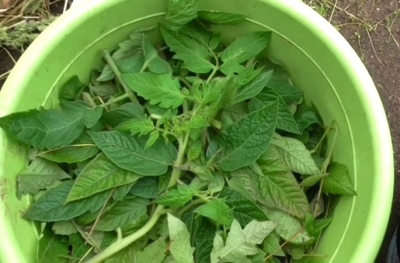
For information on how to properly care for a fir, see the next video.































































The comment was sent successfully.